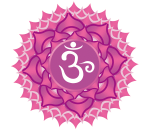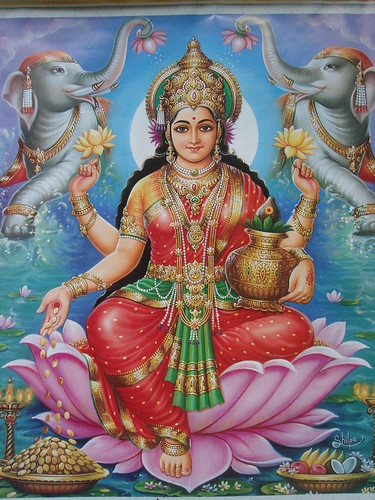In this past week’s
classes we focused on the Sanskrit mantra OM
Mani Padme Hum. Because our limited class time does not allow us to discuss
the meaning of a mantra in depth, I am offering some more information here. It is
my hope that it will enrich your practice.
The Mani mantra is a central prayer among Tibetan Buddhists, and is perhaps
the most widely used of all Buddhist mantras. It is open to anyone who feels inspired to
practice it -- it does not require prior initiation by a lama (meditation
master).
Since Sanskrit is a
vibrational language and has many layers of meaning, it can’t be translated
literally. The generally-accepted meaning is “Hail to the jewel in the lotus”
or “Behold the jewel in the lotus.”
The lotus flower is a prevalent
image that is found across Eastern traditions. It symbolizes purity, Divine
wisdom, and represents our awakening into higher consciousness. Many Hindu gods
and goddesses are depicted seated on a thousand-petaled lotus. In the yogic
anatomy of the energy body, the crown chakra is imaged as a great lotus flower
with a thousand petals, representing full spiritual realization.
A lotus flower grows out
of the muck at the bottom of a pond. It rises up above the surface of the water
and blooms into a magnificent flower.
Spiritual practice invites us to rise up out of the muck of our
conditioning and habitual egoic mind states such as fear, judgment of self and
others, self-doubt, greed, and resentment.
The blossoming lotus is our own natural compassion and love that wants to
unfold in the light of awareness. In the
center dwells the shining jewel, the radiance that lives at the core of our
being. Eastern traditions teach that our
true nature is compassionate and open-hearted. The practice of yoga opens the
petals of our being and uncovers our radiant, divine essence.
The mani mantra is
chanted for purification. Each syllable in the mantra is associated with a
different positive quality, as well as a limiting mind-state to be purified.
The six syllables may be
pronounced as:
Om
(ohm) |
Ma
(mah) |
Ni
(nee) |
Pad
(pahd) |
Me
(may) |
Hum
(hum) |
The vowel in the sylable Hu is
pronounced as in the English word 'book'.
(Note that many Tibetans
use a slightly different pronunciation: Om Mani Peme Hung )
OM:
cultivates generosity, purifies ego /pride
MA:
cultivates ethics, purifies jealousy and lust for entertainment
NI:
cultivates patience, purifies passion/desire
PAD:
cultivates diligence, purifies ignorance/prejudice
ME:
cultivates renunciation, purifies poverty/possessiveness
HUM:
cultivates wisdom, purifies aggression/hatred
Many Tibetans recite the mantra
thousands of times as part of their daily prayer practice. It is also printed
on prayer flags that blow the prayer to the winds, carved on stones, and written
on papers inserted into holy statues and prayer wheels.
The Mani mantra is
associated with Chenrezig, the bodhisattva
of compassion (known in other Buddhist cultures as Avalokiteshvara and Kwan Yin).
Chenrezig is a highly-revered figure in Tibetan Buddhism who inspires us to
awaken to our own natural compassion and goodness.
We might have trouble believing that we are no different than Chenrezig -- but learning about the nature of compassion, and learning about Chenrezig, repeating his mantra Om Mani Padme Hum and imagining that we would like to be like Chenrezig, pretending that we really are just like Chenrezig, we actually can become aware of increasing compassion in our lives, and ultimately, the lamas tell us, awaken as completely wise and compassionate buddhas.
~gratefully borrowed from http://www.dharma-haven.org/tibetan/chen-re-zig.htm
In class this week, each
student received a small. clear “jewel” to keep as a reminder of the
magnificence that dwells within. May we
be compassionate with ourselves, on and off the mat, and may our lives be a
blossoming that reveals the radiance that we truly are.







No comments:
Post a Comment